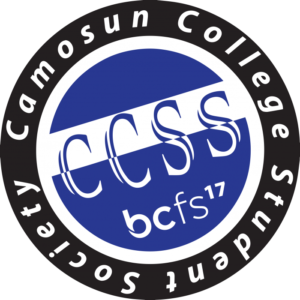Camosun College Student Society sponsored content
Open Education Week was back in March, but the Camosun College Student Society (CCSS) celebrates the achievements of Camosun College instructors in the area of open education year round.
Open educational resources include learning, teaching, and research materials that others can use, make changes to, and distribute, for free. For students, one of the main benefits of open education resources is access to free textbooks.
CCSS executive director Michel Turcotte says that open education is beneficial for students because it helps ease their financial burden and also can help create better learning materials.
“Many students are not able to afford all of their required or recommend textbooks and struggle academically as a result,” says Turcotte. “Open educational resources and other zero textbook cost initiatives make education more affordable for students and ensures equitable access to learning materials. Open educational resources are not inferior to regular textbooks—in fact, they are often more adaptable, interesting to read, and better customized to the course material.”
On Friday, March 8, Camosun held its Open Education Showcase and Recognition Awards event at the Sherri Bell Hall in the Wilna Thomas Building at the Lansdowne campus. Faculty from programs including Anthropology, Math, Sheet Metal, Pipe Trades, Marketing, Sport Management, and many others were recognized at the event. Turcotte was invited to attend the event to help acknowledge Camosun’s leaders in open education.
“It was wonderful to help recognize amazing Camosun instructors who are dedicated to providing cost-free learning resources to their students, even in areas such as Biology and the trades, which have historically had very expensive textbooks,” says Turcotte.
At last year’s teacher recognition award celebration, Biology instructor Charles Molnar was given the Mary Burgess Open Education Recognition Award for his work helping create free open-source textbook Concepts of Biology—1st Canadian Edition.
“The modern textbook companies write many different formats that students can take advantage of and provide various resources, like videos and online quizzes and stuff like that,” Molnar told Nexus at the time. “The point is is that students get this quality product with all the different aspects included and it is forever, and it is free of charge. So, they can have this and don’t have to rent it or return it or anything of the sort.”
Emily Schudel is a big supporter of open education here at Camosun. Schudel is the instructional designer and chair of the Dr. Lloyd Morin Centre for Excellence in Teaching and Learning at the college.
“Emily received a surprise award to recognize her tireless efforts and it was a pleasure to co-sign that certificate on behalf of students,” says Turcotte. “I really enjoy working with Emily and can not help but be infected by her unrivalled passion and energy. She is an amazing advocate for zero textbook cost initiatives, which has helped save Camosun students thousands of dollars.”
Head to camosun.libguides.com/c.php?g=733032 to check out the Camosun College Open Education Resources guide. It’s a handy resource that, among other things, can tip you off to some courses that use open textbooks (hello, Marketing 230 and Anthropology 260) and also provide you with interesting pieces of information, such as the fact that within open education there are Traditional Knowledge Licences, which honour Indigenous and cultural knowledge, something lacking in traditional copyright laws.
The Camosun College Open Education Resources guide also features profiles of Camosun instructors who are involved in open education, such as Dental Hygiene instructor Liz Morch. Morch pointed out that another great aspect of open education is the flexibility it offers for instructors, which can mean a more reasonable course load for students.
“In January, students have quite a bit of time, whereas in April, they are going to be stressed out and maxed out with projects that require considerable time and effort,” Morch explained in her profile. “If I create modules for them to work through on their own, then they can choose to finish 80 or 90 percent of this course in January so they have more time at the end of the term to devote to their final projects.”

